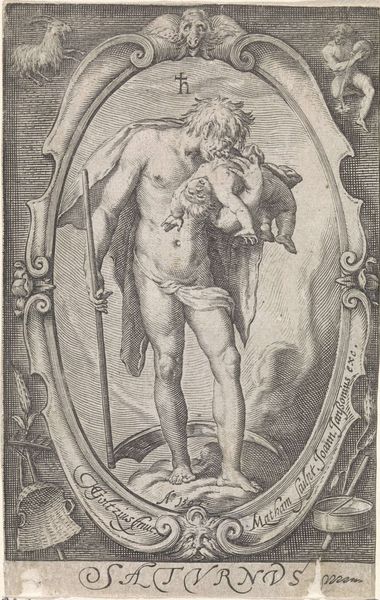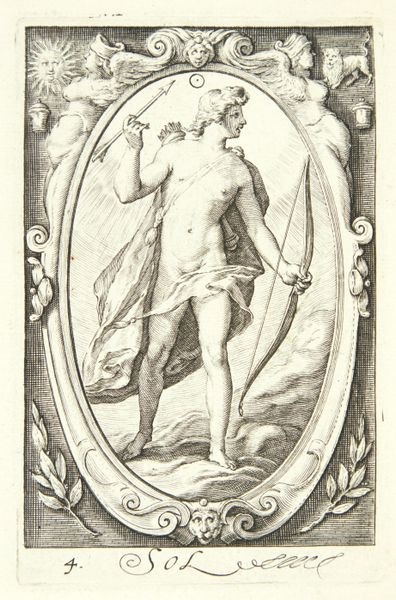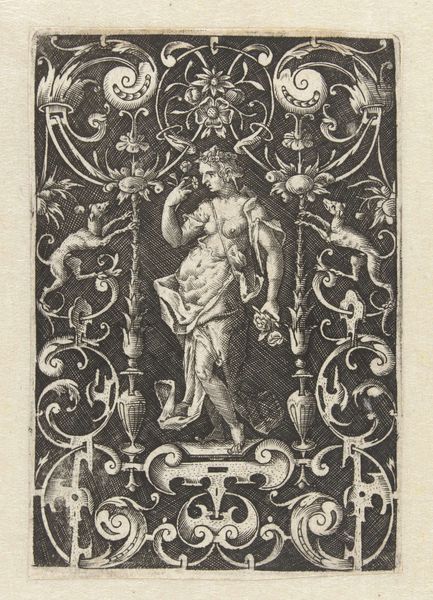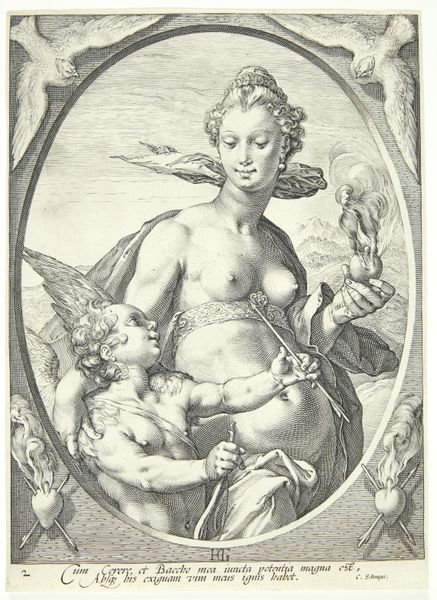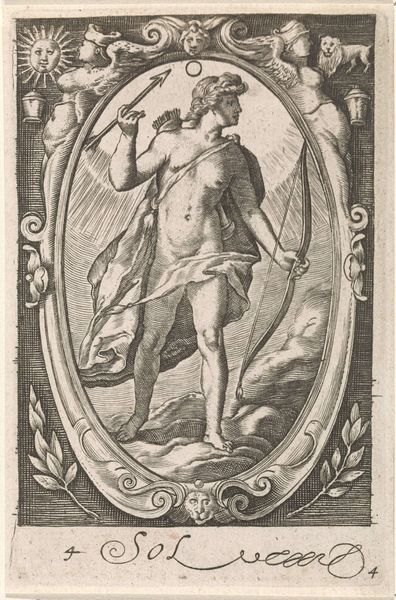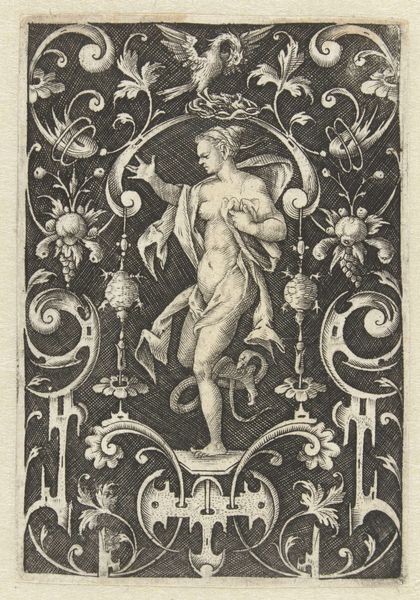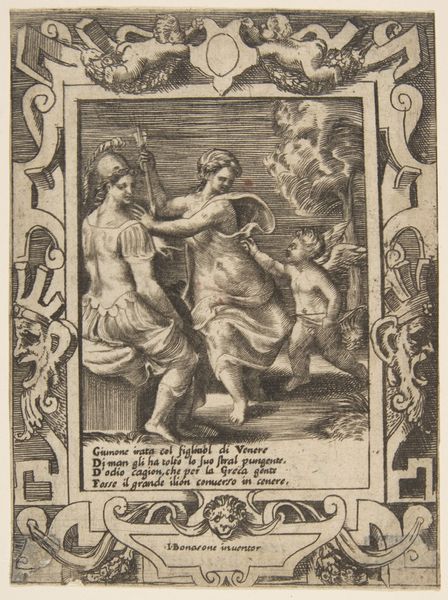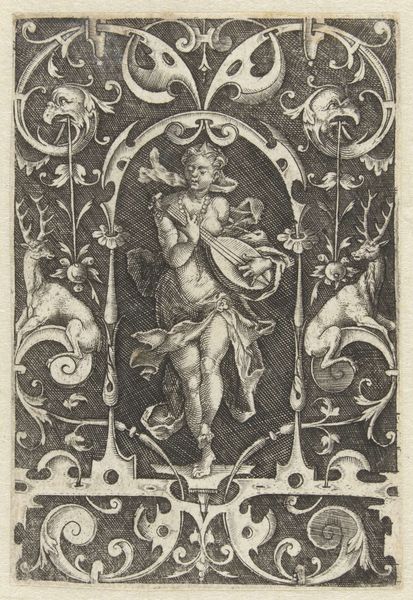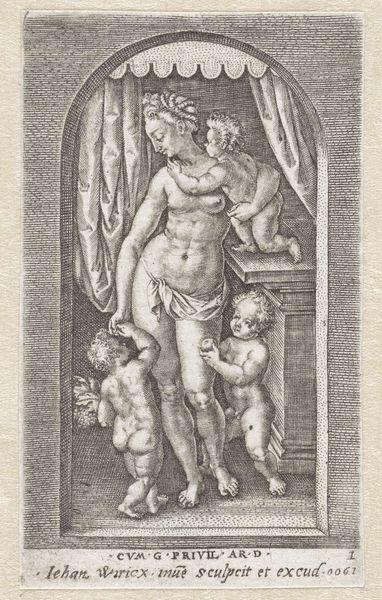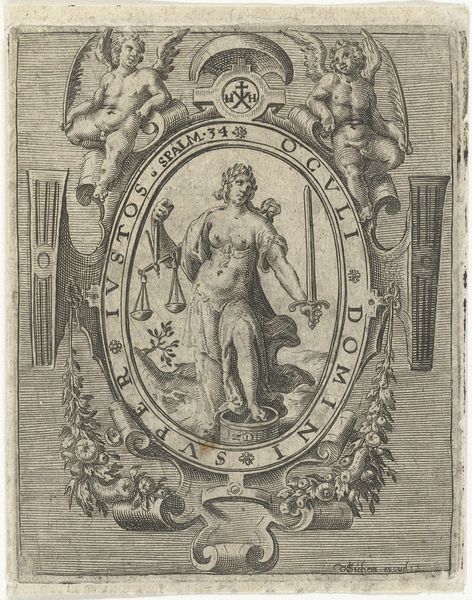
print, intaglio, engraving
#
portrait
#
allegory
#
baroque
# print
#
intaglio
#
figuration
#
history-painting
#
nude
#
engraving
Dimensions: 118 mm (height) x 78 mm (width) (plademaal)
Jacob Matham made this small print of Venus, the Roman goddess of love, sometime around the turn of the 17th century. It’s an engraving, meaning that Matham would have used a tool called a burin to carve lines into a copper plate. Ink was then applied to the plate and wiped off, remaining only in the incised lines. The plate was then pressed onto paper, transferring the image. Look closely at how the incised lines give shape to Venus's body, Cupid’s hair, and even the decorative frame around them. Engraving demands precision. The thickness and density of the lines create areas of light and shadow, giving depth to the figures. Note that there are no broad tonal fields here, as you might see in a painting. Every mark is deliberately made, requiring immense skill and time. In Matham’s time, prints like this one were luxury items, but they also served a democratic function. They allowed images and ideas to circulate widely. So, while this image reflects Matham’s technical virtuosity, it also speaks to the power of reproductive technologies in early modern Europe.
Comments
No comments
Be the first to comment and join the conversation on the ultimate creative platform.

